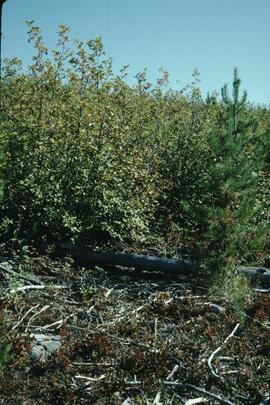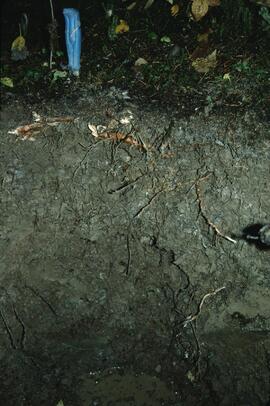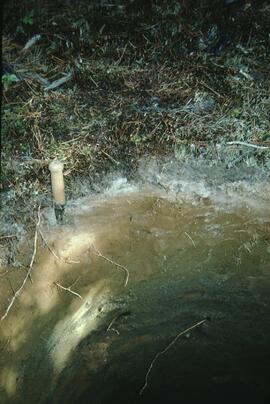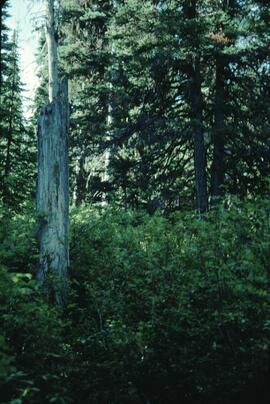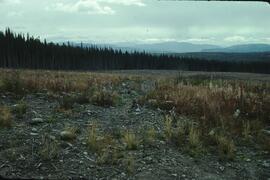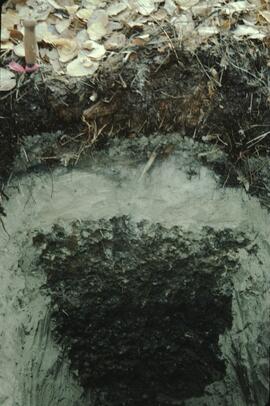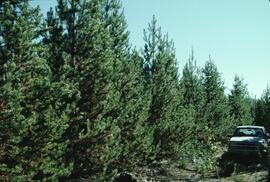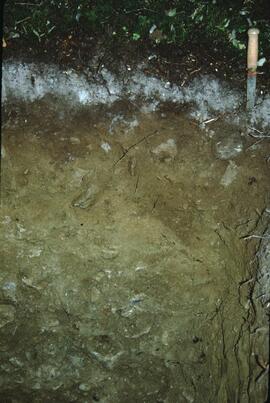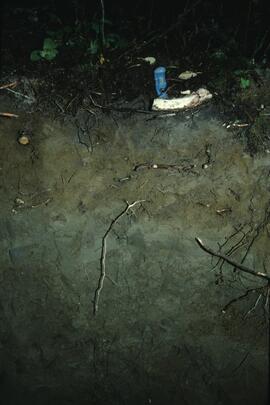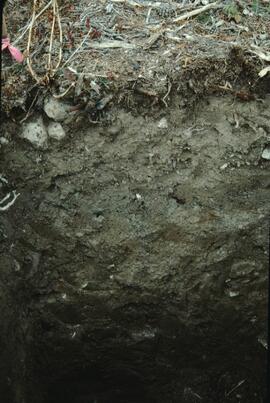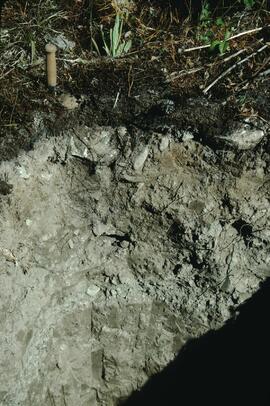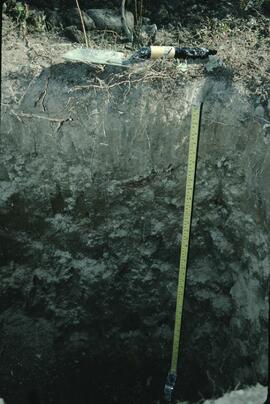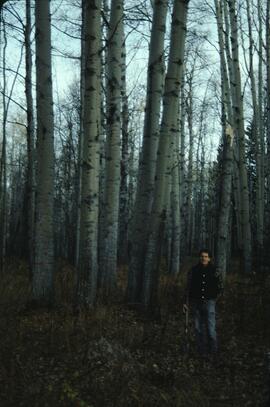Research on the ecological functions of coarse woody debris (CWD) in forests, and techniques for inventorying CWD, were major topics for forest ecologists and soil scientists during Paul Sanborn's years with BC Forest Service research program (1991-2002).
File of documents consists mostly of unpublished internal and consultant reports, workshop summaries & handouts, and government publications (BC, Canada, USA). Methods-related documents may have been drafts which were superseded later by published manuals. In some cases, the document has a memo or email attached which provides some additional context.
Includes the following items:
BIOFOR Resource Consultants. (n.d.) Methodology for developing coarse woody debris photo guides. [consultant report to Ministry of Forests, Research Branch]
Brown, J.K., T.E. See. 1981. Downed dead woody fuel and biomass in the northern Rocky Mountains. General Technical Report INT-117. USDA Forest Service.
Clark, D.F., P.J. Burton, J.A. Antos. 1995. A comparative study employing different methods for inventory of coarse woody debris. Symbios Research and Restoration, Smithers, BC. September 30, 1995.
Ellis, R. 1996. Summary of the coarse woody debris workshop, Cowichan Lake Research Station, April 11-12, 1996. [Incl. handouts by A. Mackinnon, S.W. Taylor & J.V. Parminter]
Ember Research Services Ltd. 1997. CWD/Fuel calculator user’s guide. October 1997.
Hermanek, H. 2001. The distribution and description of CWD in the SBSmk1 and IDFdm2 zones of British Columbia. Work term report, Biology Co-op Program, University of Victoria.
Lajzerowicz, C. 2000. Coarse woody debris: what are we leaving in British Columbia. Examining TRENDS. ET2000-02. Northern Interior Vegetation Management Association.
Lajzerowicz, C. 2000. Coarse woody debris: what are the changes following harvesting in Alberta. Examining TRENDS. ET2000-03. Northern Interior Vegetation Management Association.
Lloyd, R. 2001. A comparison of coarse woody debris in harvested and unharvested sites in the SBSmc2: First-year report, March 2001. Prepared for: Houston Forest Products.
Mackinnon, A. 1996. What kind of CWD measurements are MOF research ecologists using? [handout at CWD Workshop, April 11-12, 1996]
Mackinnon, A., J. Parminter. 1996. Natural landscape patterns and processes. Notes from a meeting at Cowichan Lake Research Station, April 10, 1996.
Marshall, P.L. 1999. Using line intersect sampling to determine the volume of odd-shaped pieces of coarse woody debris: an explanation of the Vegetation Resources Inventory formula. Contract report to: Ministry of Forest, Vancouver Region. February 1999.
Marshall, P.L., G. Davis, V.M. LeMay. 2000. Using line intersect sampling for coarse woody debris. Forest Research Technical Report, TR-003. Vancouver Forest Region.
Ministry of Forests, Resources Inventory Branch 1999. Pilot study for dead tree information on growth and yield permanent sample plots.
Parminter, J. 1994. Correction factors and the measurement of coarse woody debris. Research Branch, Ministry of Forests. March 11, 1994.
Parminter, J. 2001. Natural disturbance research and project summaries. Cowichan Lake Research Station meeting, April 10, 1996.
Parminter, J. 2001. Procedures for measuring CWD volume in spot accumulations, landing piles and strip accumulations.
Parminter, J. 2001. CWD extensive pilot program – sampling of CWD in cutblocks.
Robson Valley Enhanced Forest Management Pilot Project. 2001. Field data collection protocol manual: coarse woody debris survey 2001. [attached covering email from B. Rogers]
Rogers, B. 2001. Robson Valley Enhanced Forest Management Pilot Project, Coarse Woody Debris Assessment Phase I: Working Plan 2001. Prepared for: Ministry of Environment, Lands and Parks. March 3, 2001.
Snag Protocol Team. 2000. Northern region snag management protocol: January 2000. USDA Forest Service, Northern Region.
Taylor, S.W., J.V. Parminter. 1996. Effects of broadcast burning on coarse woody debris in British Columbia. [handout at CWD Workshop, April 11-12, 1996]
Graham, R.T. et al. 1994. Managing coarse woody debris in forests of the Rocky Mountains. Research Paper INT-RP-477. Intermountain Research Station, USDA Forest Service. Available online at: https://www.fs.usda.gov/research/treesearch/24829 (accessed March 2023)
Harmon, M.E., J. Sexton. 1996. Guidelines for measurements of woody debris in forest ecosystems. Publ. No. 20. U.S. LTER Network Office. Available online at: https://andrewsforest.oregonstate.edu/pubs/webdocs/reports/detritus/publications/Guidelines%20for%20Measurements%20of%20Woody%20Detritus%20in%20Forest%20Ecosystems.pdf (accessed March 2023)
Rogers, B. 2002. Robson Valley Enhanced Forest Management Pilot Project, Coarse Woody Debris Assessment Phase III: Final Report. Prepared for: Ministry of Environment, Lands and Parks. Available online at: https://www.env.gov.bc.ca/omineca/documents/cwd_2002_reportf.pdf (accessed March 2023)
Stevenson, Susan K. (March 1999). Biodiversity assessments at silvicultural systems sites, summer 1998. Prepared for: Prince George Forest Region, BC Ministry of Forests, Prince George BC. 16 p. + 16 p. graphs
Taylor, S.W. 1997. A field estimation procedure for downed coarse woody debris. Technology Transfer Notes. No. 2, August, 1997. Available online at: https://publications.gc.ca/site/eng/409169/publication.html (accessed March 2023)
